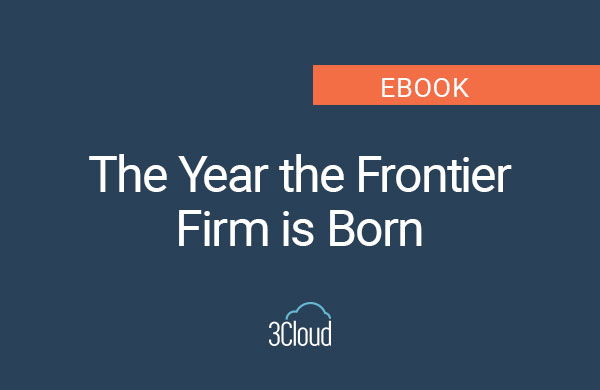Data and analytics leaders are facing high demand with business data, but it’s no simple ask. Today, nearly two-thirds are being forced to rethink their operating model to support data-driven innovation and accelerate organizational agility, with data governance at the core.
A clear force behind that is AI. However, being accountable for it, how it gets deployed and its scalability and cost to the organization are also under a data and analytics leader’s purview.
A solid technology infrastructure has always been essential. Still, it’s our view that modern data architectures are not mutually exclusive. They are collectively transformative. And Microsoft’s approach with Microsoft Fabric offers data and analytics leaders a clear path to untangle an increasingly complex data, analytics and AI landscape.
Fabric has been around for over a year, offering an integrated suite of data and analytics tools with AI built into every workload, brought together in a lake-first foundation and managed as a secure, governed solution. It’s a one-stop shop for data integration, data engineering, real-time analytics, data science and business intelligence with democratized access to data. It’s all of that, but it’s also more.
Here’s how Microsoft Fabric can support all the pressures data and analytics leaders face – without evolving their operating models altogether.
1. Scalability & Elasticity
If you’re like most organizations, you’ve felt the pain that comes with rapid data growth. Fabric was built not only to consolidate structured, unstructured and real-time data under a unified architecture but also to automatically scale compute and storage resources in response to analytics workload demands. Take, for example, retail organizations that want to scale up real-time analysis and analytics of customer transactions, merchandising and supply chain strategy during the holiday season. Fabric’s elasticity ensures those organizations can handle spikes in demand without over-provisioning resources.
2. Cost Containment
Cost is always a consideration, especially when balancing cloud expenses with the need for robust data management, analytics, and AI capabilities. As a unified platform, Fabric offers organizations ways to manage and control data storage, processing, and analytics costs. For example, OneLake minimizes redundant storage costs by centralizing and deduplicating data. In fact, an integrated healthcare system in the southeast engaged Microsoft and 3Cloud to migrate their data warehouse and its components into a scalable architecture within Fabric, ultimately saving $2.5 million in licensing and hardware costs.
3. Operational Efficiency
Manual processes and bottlenecks are the thorn to insight and innovation. Fabric was built to streamline workflows and deliver insights quickly. Built-in pipelines and AI-powered tools automate data ingestion, transformation and analytics, improving overall efficiency. Plus, Microsoft Copilot and other AI capabilities are built into every layer of Fabric to help data professionals and business users automate routine tasks. According to the latest from Microsoft, “users were 52% faster in completing standard data analysis tasks and uncovered insights 36% more accurately when using Copilot in Fabric.” For Melbourne Airport, that resulted in it using Fabric to analyze operational data in real time to gain a 30% increase in performance efficiency across data-related operations.
Proof point from an experienced Microsoft partner
More than two decades of Microsoft knowledge, eight years as the leading Microsoft Azure partner, and over 160 certified Azure experts means we understand how to help companies address the current landscape with Fabric while remaining agile for the future.
Learn more about creating synergy between data, analytics, and AI with Microsoft Fabric and 3Cloud.




